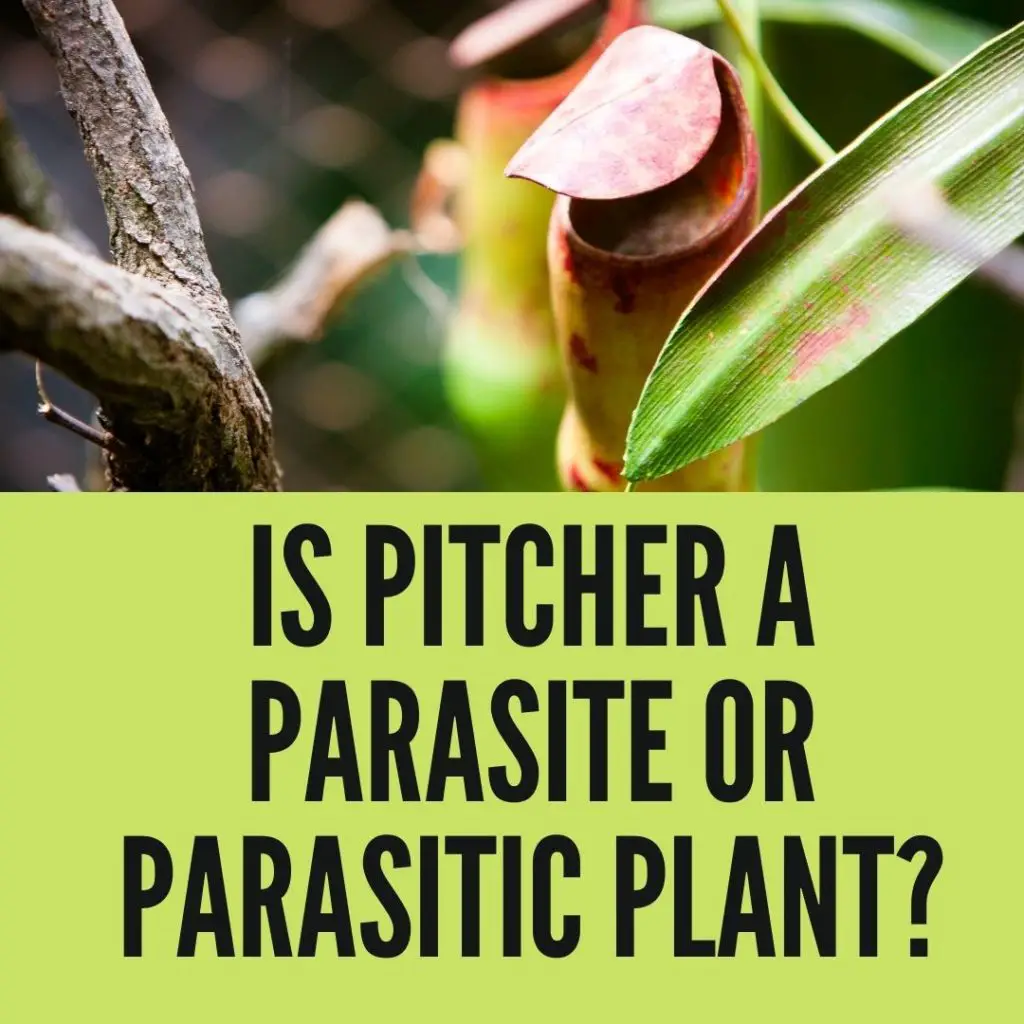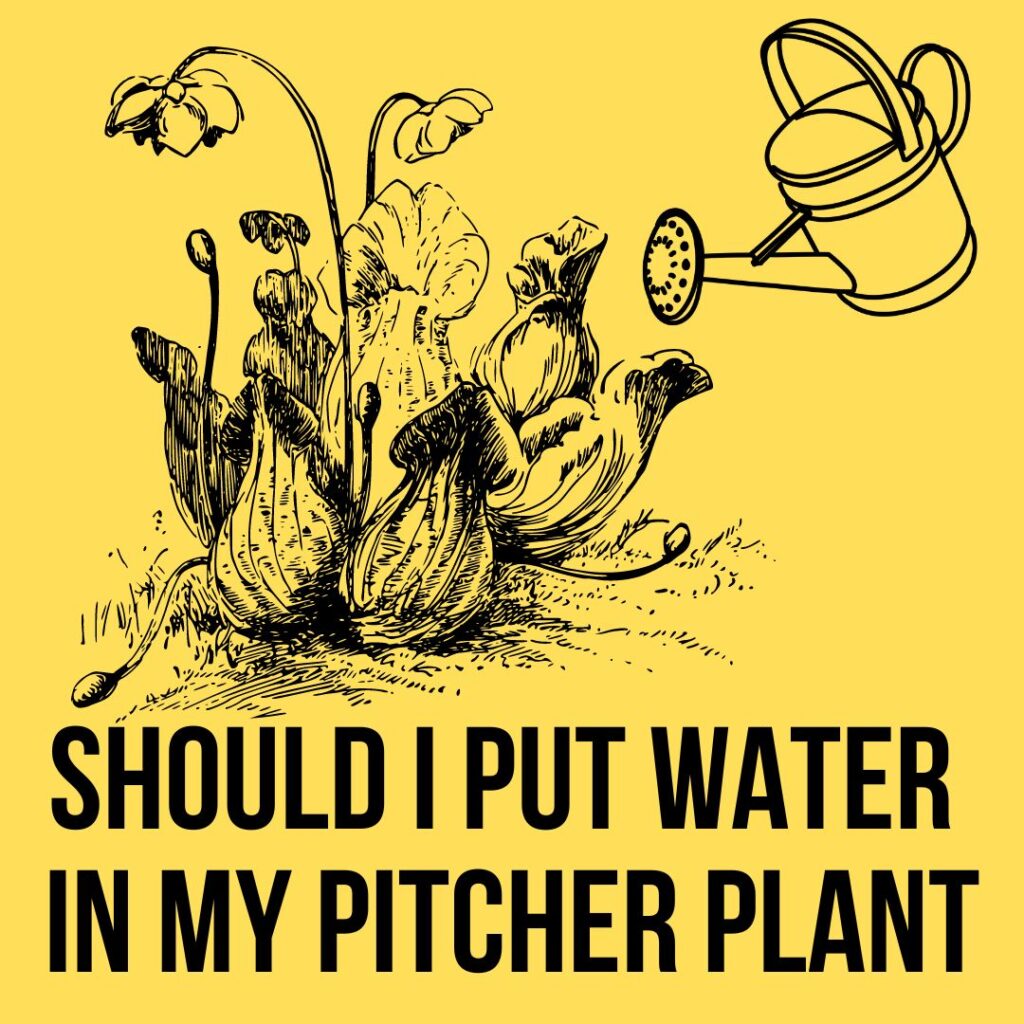If you’re noticing your pitcher plant is turning brown, there’s a good chance that it’s suffering from a problem. In this article, we’ll outline the different types of problems that can afflict pitcher plants.
One of the most common phenomena for pitcher plant growers is the pitcher plant turning brown. Sometimes it’s just pitchers or leaves and sometimes it’s the whole plant. Depending on the situation it happens for many reasons.
But gardeners get confused to determine the actual cause and solution. But it’s not a complex matter, by some simple symptoms one can easily find the right reason. As we have done before, today let us help you to find the answer to why is your pitcher plant turning brown.

The turning brown of your pitcher plant can be divided into mainly four categories.
- Pitcher
- Leaves
- Stem
- Whole Plant
why is my Pitcher Plant Turning Brown?
INDIVIDUAL: If the pitchers are turning brown individually, it’s a normal matter. This happens naturally. When a pitcher gets old after a few months and falls from the plant. Or sometimes from the overfeeding of the pitchers. Your plant will grow a new pitcher instead of the old one. It takes about six months or so to grow a new pitcher for the plant.
On the other hand, a pitcher stays for a year or two. Even if it’s not growing a new pitcher before and during the fall season it’s totally fine. The plant is probably growing through the dormant periods. Give it some time and it will grow its own pitcher. Remember, it’s normal turning a pitcher brown individually, not altogether.
TOGETHER: Now, if you see all of your pitcher plants turning brown together it’s not normal. You are not providing enough care. Most of the time it happens because of problems in the water management system. Like overwatering or using tap water.
When overwatering excess water gets stuck and the soil becomes waterlogged. It damages the root hence pitchers can’t get their required nutrients from the soil.
REMEDY: If the soil is waterlogged stop watering. Let the soil completely dry out. Especially the soil around the base of the plant. Carnivorous plants can not tolerate wet soil. Keep the soil moist.
Do not use tap water, tap water contains minerals. Use pure water (distilled water, reverse osmosis water). Lack of proper humidity may also cause this problem. Maintain the ideal humid conditions for the plant.
In the winter season, they can’t grow enough pitchers because of the cold temperature and lack of sunlight.
Turning brown of leaves
As for the leaves, it’s pretty much the same as the pitchers. Naturally, the leaves will turn brown naturally when they get old. The plant will grow its own leaves in no time. But if all of the leaves are turning brown together it’s a bad sign. The plant is dying. This mostly happens for both lacks of proper sunlight and sunburn. Let me explain.
Newborn plants get sunburned if you place them under direct sunlight after newly growing their leaves. You have to let them slowly adjust to the outdoor sun conditions. As for matured plants, when growing indoors they can’t get enough sunlight for them to grow.
Compared to outdoor plants most of the time indoors plants’ leaves turn brown. So provide your matured plant direct sunlight. Soft and floppy leaves are also caused by overwatering issues.
Turning brown of Stem
Growers mostly get worried when they see the stem turning green or woody. Fortunately, this is also normal. Depending on the species some plants want to crawl on the ground. These plants normally stay green for a long time.
Whereas some species turn quickly woody to keep up their growth. Pitcher plants are normally vines. So they try to climb stuff using their tendril. To climb they turn their stems brown and woody. It is normal depending on the species.
They tend to climb in the direction of the light. This phenomenon mostly happens on indoor plants for not getting enough sunlight. To fill the lack of light use 40 watts of fluorescent light and place them 12 inches above the plant.
Turning brown of the whole plant
Unfortunately, the plant is dying if this happens. You have to quickly take action. Check the discussed remedy section above. Provide the proper care. If tried enough you can save the plant. For ideal care and guidelines follow this :
- Always use pure water. Avoid tap water because they contain minerals.
- Never use fertilizers on them. They already get enough nutrition from bug feeding, soil, and photosynthesis.
- Don’t let the humidity drop under 50%. According to research from Comenius University in Slovakia 80%-100% humidity is best for them.
Misting the plant and letting them dry out later, placing wet pebbles/gravel trays near the plant, and avoiding air-conditioned rooms may help to boost humidity.
- For good soil mix, peat: sand : perlite: and chopped sphagnum moss with the ratio of 1:1:1:1.

How often does a Pitcher Plant need to eat?
Being carnivorous plants they are low in nutrients. Over the years their leaves have evolved into traps. They eat spiders, slugs, tadpoles, frogs, small fishes, and even small mammals. Since they need low nutrition you can feed them insects once or twice in two weeks. That will be enough. They also get supplied with nutrients from soil and photosynthesis.
Conclusion
Even after taking proper care, and ensuring ideal needs, you can’t avoid the turning brown of your plant. Remember it’s a natural process. Native plants also go through this step. If you see individual brown leaves or pitchers at different times in your plant, don’t worry. They are probably old. And the plant will replace them with new ones. To help the plant you can trim off the browned leaf/pitcher from the plant.
And if the whole plant is changing, be serious and follow the discussed steps. If tried hard you can revive the plant. Most of the time they suffer from over-watering issues. Wet soils are necessary for pitcher plants but don’t make the soil waterlogged. Keep the place humid at about 80%.

Hi, I am Rahat Rubayet. I am an entrepreneur and A gardener by Hobby. I created This website to help people like you, who want to make the world greener and want to leave it as a better place for our next generation.



